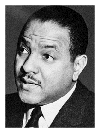

F. H. Jenkins
Preparatory
School
OUR HISTORY
In the early 1900’s the Southern and Southeastern Unions of Seventh-Day Adventists engaged Ms. Anna Knight (a former school teacher and nurse) to coordinate black SDA educational work in the south. As a result of her efforts to raise the consciousness of Adventists regarding the state of black SDA schools and her work in standardizing curricula, black Seventh-Day Adventist schools were opened in several southern cities. Included among these schools was the elementary school in the Nashville, Tennessee area.
The forerunner of F. H. Jenkins was the Edgefield Junction School which started around 1909 and was associated with the Edgefield Junction Seventh-day Adventist Church. The church experienced several moves (from Edgefield Junction to Winter Street to 12th & Meharry Boulevard) from the early 1900’s to the 1920’s carrying the school with it.
From the 1920’s through the late 1960’s the school was housed at the 12th and Meharry Boulevard location in the Meharry Boulevard SDA church. Among the teachers of note from the Meharry location were Mrs. Marie Warnick, Mrs. Brantley, Mrs. Julie Wesley, Mrs. Britten, Mrs. Bernice Reynolds, and Mrs. Custard. Notable among the children who were educated during this era was Carl T. Rowan, a student in the thirties, who later became a United States ambassador to Finland, head of the U.S. Information Service, a syndicated newspaper columnist, and a television/radio commentator.
In the early 1970’s the school experienced another move when the Meharry Boulevard church moved to 25th Avenue North and became the Hillcrest Seventh-day Adventist Church. The school took residence in the church’s Child Development Center located at 2010 24th Avenue North on the church’s property. During the 1940’s a second African-American Adventist church school was established and was located on the campus of the Riverside Adventist Sanitarium/Hospital. This school was sponsored by the Riverside Chapel Seventh-day Adventist Church. Druillard Hall is where the school was initially housed. Both schools serviced grades one through eight and for many years the schools operated separately.
Historically it has been recalled that Fitzgerald Huntington (F.H.) Jenkins had joined the South Central Conference of Seventh-Day Adventists in the capacity of Youth Director and Educational superintendent of schools in 1955. As a promoter of our private church school system he was sensitive of the cost to students and teachers due to the heavy teaching loads that all of the teachers carried. According to an article written by his wife, Mrs. V. Jenkins, Elder Jenkins felt the Nashville situation could be changed. “Why,” he mused, “should this city have two eight-grade schools, each taught by one teacher, their dedication and efficiency notwithstanding? How much more effective the teaching and learning could be if teaching loads were lighter, cut in half.” He felt that the plan of becoming one could become a reality with Unit I and Unit II (which was what the Hillcrest and Riverside locations became known as respectively).
It was during the late 1960’s that the constituent members of the African-American SDA churches in the area (Hillcrest and Riverside Chapel) decided to unify the two separate school programs. Shortly after the sudden death of Elder F.H. Jenkins in 1968 it was announced at a school board meeting by Elder Charles D. Joseph, then pastor of the Hillcrest church, that the Hillcrest and Riverside churches had voted to operate one school together under the legal name of F.H. Jenkins Elementary School. The pastor of Riverside Chapel at that time was Elder Lee Paschal.
The schools operated as a unified institution at the two locations for a number of years. In the early years of this consolidation a small building was constructed on the site of the former Riverside hospital property at 814 Youngs Lane where grades five through eight were taught until the new school building could be completed. The Hillcrest church’s site housed grades one through four. The needs of each physical plant were met by the individual churches while the subsidies and teachers’ payroll were divided equally between the churches. Mrs. Sarita Coopwood was elected by the school board to serve as treasurer.
Progress toward realizing the dream of a new school building to house all eight grades initially seemed almost imperceptible, but later the movement began to pick up speed. Dr. Luther Adair, the school board chairman at the time, is popularly credited with being the “whip” that saw that the dream became a reality. Finally, after much sacrifice, time-consuming commitments, and trust in God the present school building at 814 Youngs Lane was completed in late 1988.
God has continued to bless our school tremendously. The academic year 2002-’03 added a new dimension with the establishment of a kindergarten program. In March of 2004 F.H. Jenkins became accredited by the Southern Association of Colleges and Schools (SACS) in addition to our accreditation by the Southern Union Conference of Seventh-day Adventists and the National Council for Private Schools.
In 2015, the constituency voted to change the name of the school to F.H. Jenkins Preparatory School. The policies, regulations, and general management of the institution are determined by a board chosen from three constituent churches: Hillcrest, New Life, and Riverside Chapel Seventh-Day Adventist churches.

Anna Knight

Carl T. Rowan

F. H. Jenkins